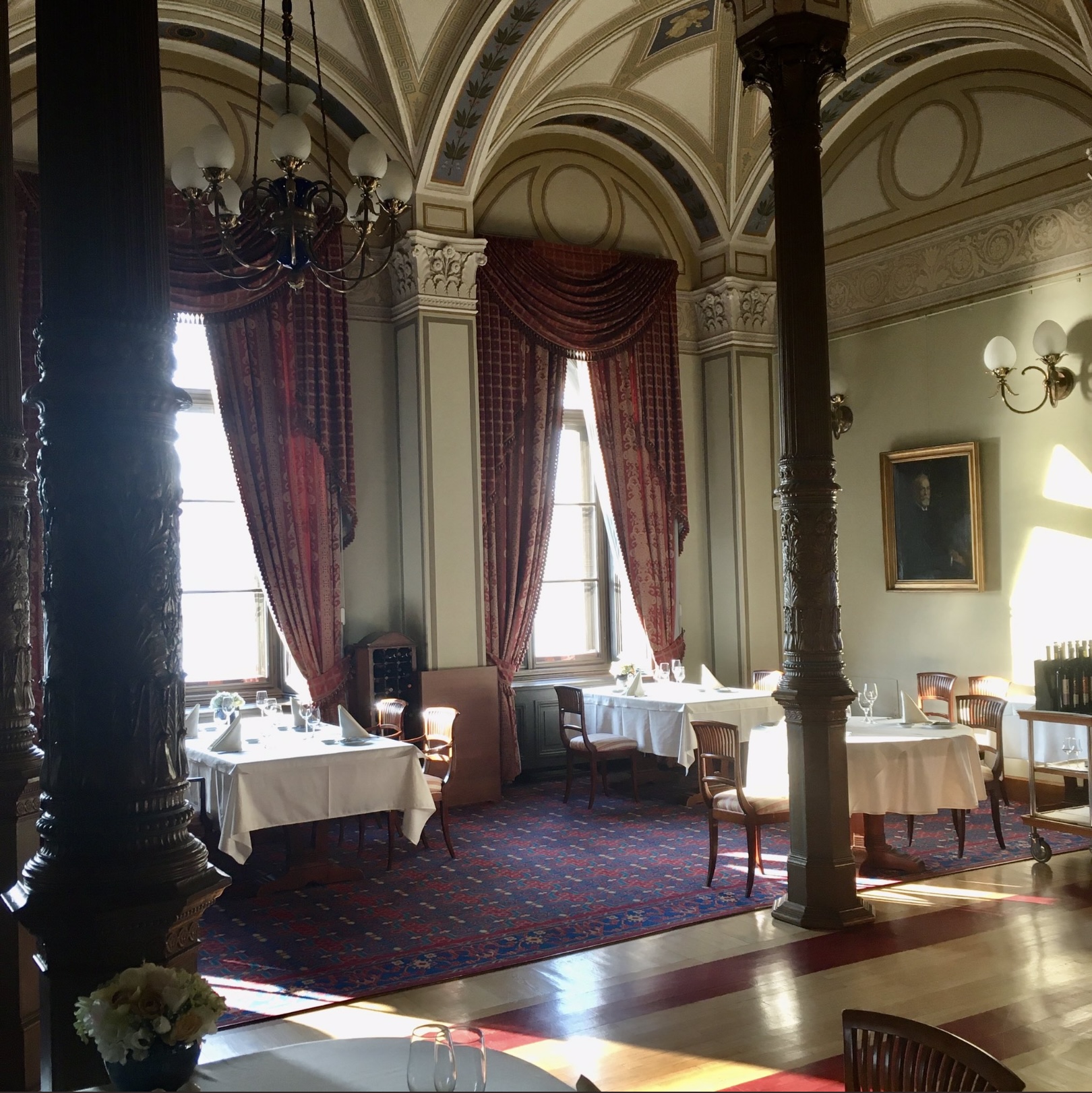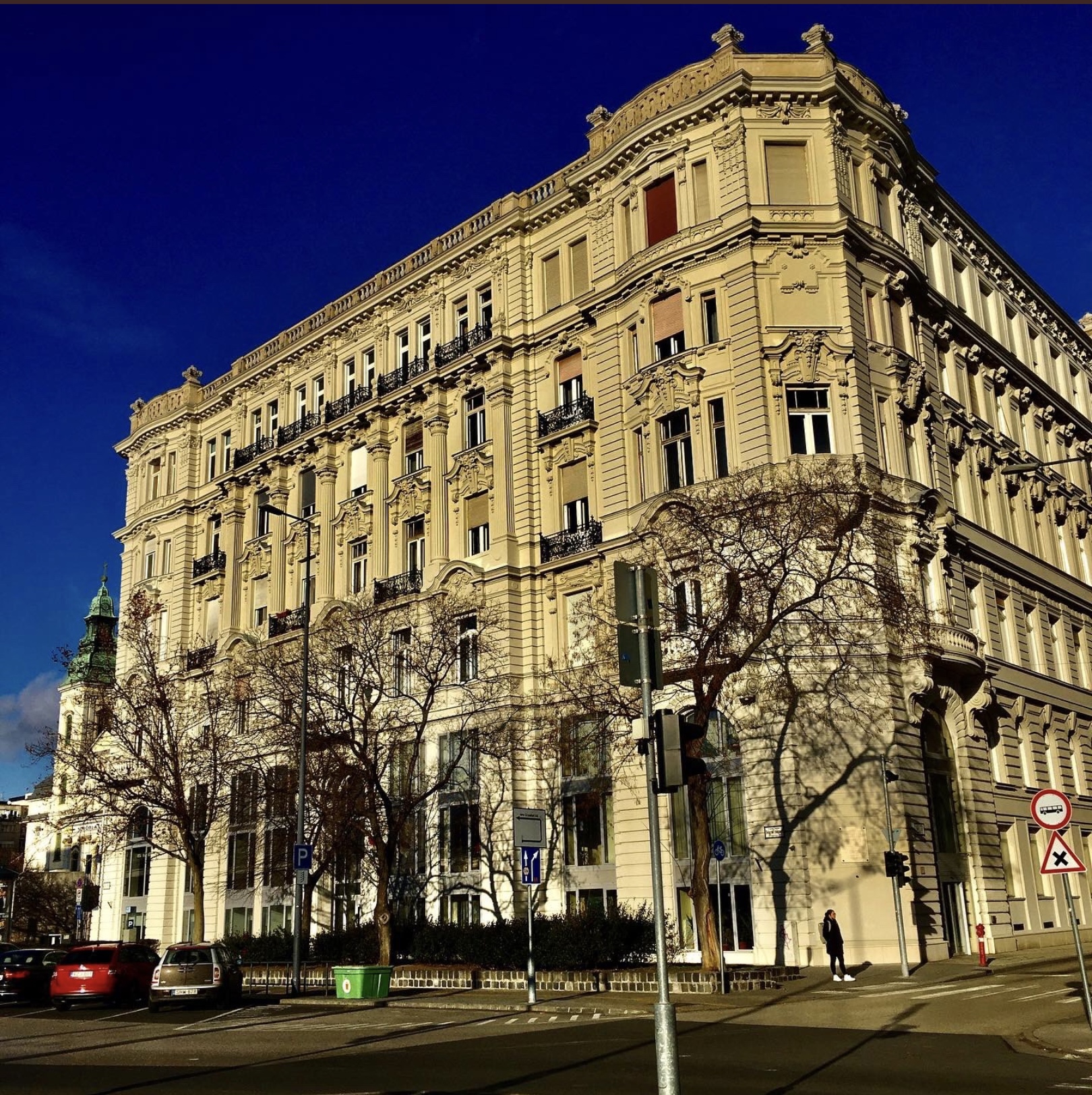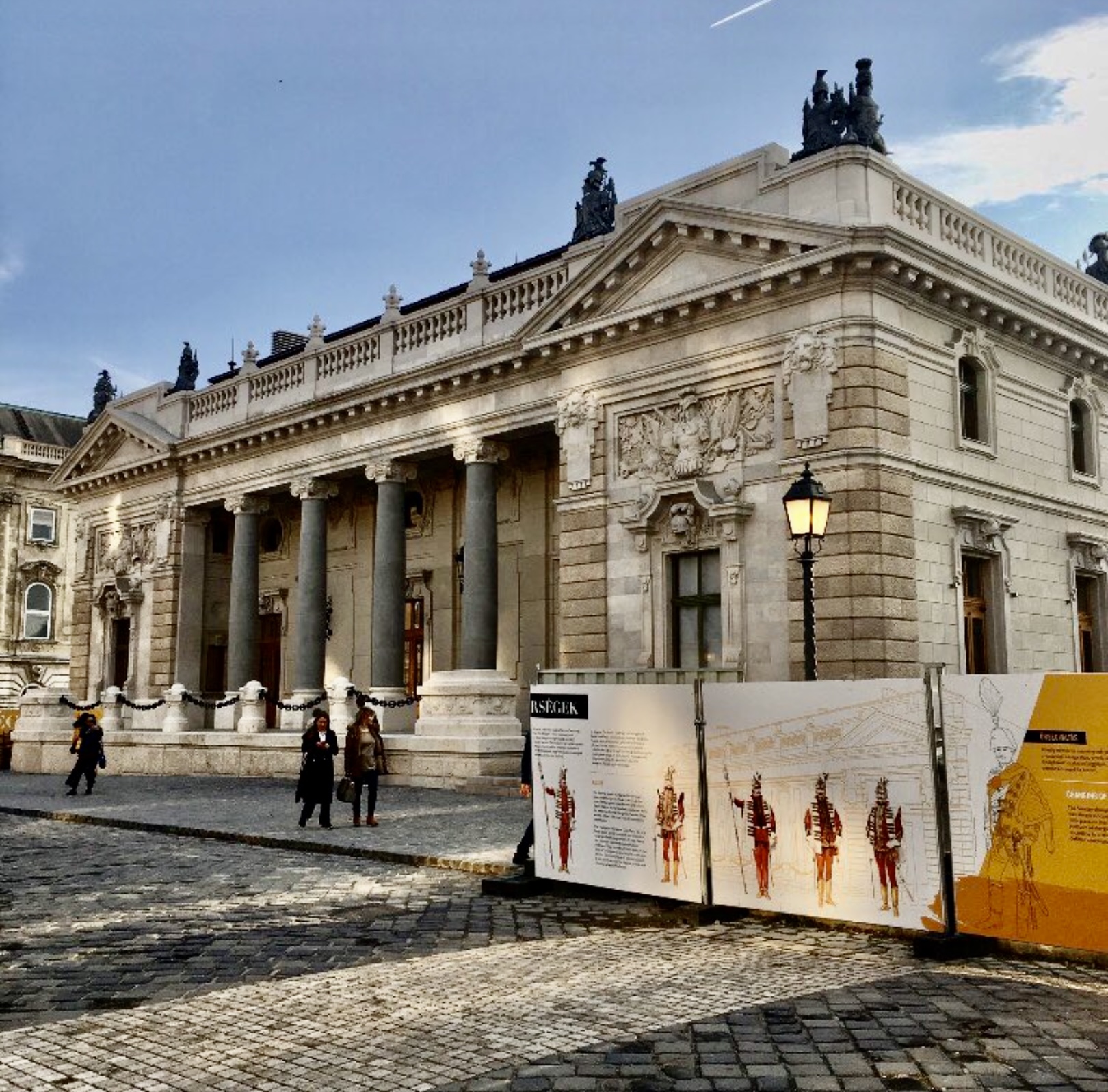Budapest Soon To Be 150
- 18 Apr 2023 1:37 PM

The 50th birthday in 1923 was under the shadow of the national tragedy of Trianon. And the 100th birthday in 1973 came during Hungary’s grim near half-century as a Soviet-bloc communist dictatorship.
The municipal unification which founded Budapest occurred towards the beginning of the city’s golden age after the ‘compromise’ with Austria in 1867, which launched the dual monarchy and Hungary’s elevated status as the co-senior partner of one of Europe’s great powers.
For the following half century Budapest boomed, developing into one of Europe’s richest and grandest cities, blending a variety of architectural styles – baroque, classicist, Ringstrasse eclectic, neo-Gothic and Hungarian Secessionist – into a harmonious whole, which, miraculously, has largely survived. With Budapest’s magnificent setting astride the Danube, it is , as Annabel Barber states in her Blue Guide Budapest, ‘one of the loveliest cityscapes on earth’.
Despite the trauma of Trianon, the authoritarianism of Admiral Horthy’s regime and even the onset of World War II, Budapest’s glory days in many ways continued until the German occupation and arrival of the Red Army in 1944.

Yet even during the darkest days of the Cold War, Budapest never quite lost its status as one of Europe’s great cities. Though parts were badly damaged during the 1944-45 siege and in 1956, Budapest wasn’t devastated on the scale of Germany’s cities.
The central areas along both sides of the river were wrecked during the siege by artillery and the retreating Germans destroyed the historic bridges, but most of Budapest’s buildings were salvageable and patched up by the post-war communist regime.
This was done with varying taste and competence. In the Buda castle district, the Royal Palace was rebuilt on the cheap, with many of the details of the earlier neo-Baroque building unreconstructed and an appalling choice of replacement windows.
As many have observed, the result didn’t look too bad from a distance, but was pretty awful close up. Many of the surrounding buildings with royal connections, which could have been rebuilt, were, for ideological reasons, bulldozed instead.

Tragically, communist planners also decided not to rebuild much of one of the glories of pre-war Budapest, the Pest Corso between the Chain and Elizabeth bridges, with its grand belle-époque hotels. Their unsympathetic replacements remain a blot on the cityscape.
Other great losses under the communists were the much-loved original Elizabeth Bridge, the only one of the city’s four historic bridges not restored to its original plans, and – an act of true vandalism – the demolition of one of the city’s magnificent cultural institutions, the National Theatre, originally the People’s Theatre (poignantly still remembered in the name Népszínház utca), built in 1875 to the designs of the great Viennese theatre architects, Fellner and Helmer.
Still, unexpectedly given the communists’ ideological contempt for the past and commitment to revolutionary transformation, the city survived the near half century in the Soviet bloc shabby and dilapidated but more or less intact.

I arrived in the city as Australia’s ambassador a decade after the 1989 changes and even then the city still bore heavily the marks of the city’s violent history and subsequent neglect.
Half the grand palazzi along Andrássy út were in desperate need of restoration, the Basilica was black with grime, the now gleaming Gresham Hotel was still a wreck and other landmark buildings such as the New York café and the Festetics Palace were supported by scaffolding from damage during the 1956 Uprising. The Castle Gardens underneath the Royal Palace remained a World War II-era ruin.
The transformation since then has been remarkable. Most of the city’s landmark buildings have been restored, including virtually all of the city’s churches and synagogues and other treasures such as the Fine Arts Museum, the Opera House, the Liszt Academy, the Parisi Udvar, the Matild Palace and all but one quarter of the spectacular Kodály Körönd.
The list will soon be expanded to include Gustav Eiffel’s Western Railway Station, the Drechsler Palace opposite the Opera House, the neo-Gothic former finance ministry in the Castle District and the city’s fine first department store, the 1920s Corvin Áruház on recently smartened-up Blaha Lujza tér.

Also on the horizon is the huge plan by the Pázmány Péter University to transform the city block behind the National Museum into its expanded campus. This will involve restoring the long-derelict French château-inspired Károlyi and adjacent Eszterházy Palaces and the welcome demolition of the adjacent neighbouring communist-era unsympathetic Hungarian Radio buildings.
The Budapest city council is in addition planning to transform the area around the Western Railway Station once its restoration is complete, including by demolishing the ugly concrete overpass which degrades this part of the Nagykörút.
Most spectacularly of all, the national government’s Hauszmann Plan is in the process of restoring the Royal Palace complex to its pre-World War II glory. The plan has already seen the magnificent complete reconstruction of previously demolished parts of the complex, such as the royal guards’ headquarters and the palace riding school as well as the fine restoration of the Habsburg Gate and the ‘Budapest Trevi’, the Matthias fountain.

Reconstruction is now well underway of adjacent buildings left in ruins after the 1944-45 siege – the former Foreign and War Ministries, and the palace of Emperor-King Franz Joseph’s Palatine, or Vice-Regent, Archduke Joseph. Some sneer that these buildings amount to ‘facadism’. But the effect will undoubtedly be magnificent and a huge improvement on the half-hearted restoration and vacant spaces left by the communists.
Not only have many beautiful buildings been restored or are in the process of restoration, many communist-era eyesores have been demolished to general rejoicing, in a number of cases replaced by buildings more sympathetic with their older neighbours, such as on Kossuth tér in front of the parliament.
The good news doesn’t end there. Extensive pedestrianisation in recent decades has made many inner areas of the city quieter and more civilised. This includes the Buda Castle District ; much of inner Pest’s 5th district ; the 9th’s Ráday utca, lined with restaurants ; the area behind the Opera House in the 6th ; and a large part of the inner 8th, or Palace District.
In 1999 when we bought a flat in this area, there were no pedestrian areas ; now a charming car-free precinct extends through a string of pretty squares almost the whole way from Kálvin tér to the Nagykörút.
Added to all these Budapest achievements are a superb public transport system, a high degree of safety and a vast choice of restaurants, cafés, plus the city’s wonderful thermal baths and cathedral-like covered markets, which Vienna once also had but lost. Hungary is a classical music superpower and Budapest with its ten or so professional orchestras offers huge choice. Cultural attractions of all kinds abound.
So, given all the progress, can Budapest rest on its laurels ? Certainly not. First on the list of frequently suggested room for improvement are the several large multi-lane roads which carve their way through the central parts of the city.
Rákóczi út, Üllői út and Bajcsy-Zsilinski út all cry out to be less dominated by car traffic, to be more pedestrian-friendly and leafier. It looks like a failure of metropolitan planning, for example, that multi-lane highways divide the inner city 5th district, the central tourist hub, for pedestrians at two points. Perhaps road tunnels funneling traffic under the city centre are the answer, as in Sydney?
Other transport infrastructure questions relate to links to the airport. While the airport is impressive and modern, the transport links to it are from an earlier era. The only public transport link currently is a bus along bumpy roads.
An obvious solution would seem to be to extend the M3 metro line from its final southern station at Kőbánya-Kispest the 13 km or so to the airport. And Budapest should have given priority years ago to improving the currently inadequate and worn mostly two-lane road to the airport, which passes through some of the city’s most unlovely outskirts. It’s strange that this is the welcome for many international visitors to given Hungary’s development elsewhere of an impressive modern motorway network.

In terms of the restoration of the city, despite the huge progress, every long-term foreign resident has a list of the neglected buildings that they’d love to see restored. For what it’s worth, my list is topped by the Eastern Railway Station followed by Budapest’s first skyscraper, the Anker ház ; the Gutenberg otthon in the Palace District ; the front facade of the city’s beautiful baroque early 18th century town hall ; the former stock exchange on Szabadság tér, the Unger ház on Múzeum körút and the former Maria Theresa barracks on the Ferenckörút.
To be fair, even Vienna in the mid- 1990s, after 40 years of Western prosperity, still had its share of prominent shabby buildings : those who were there at the time remember in particular the then-sad state of the War Ministry on the Ringstrasse, the Coburg Palace in the First District and the Secession Rüdigerhof.
The restoration of the facades of apartment blocks has slowed since the 2019 local elections – although Covid may have been a factor in this. In our area, the Palace District, not one apartment building has been restored in the past three years.
Still, there is hope of an improvement on this front. The 6th District has announced a project for the more concerted repair of building facades to mark the Budapest’s 150th birthday.
Some local councils, especially the 7th district’s, seem lax in combating graffiti vandalism. Often the only time the vandalism is cleaned up is when a film shoot’s in preparation.

Budapest trades heavily on its heritage including its Austro-Hungarian café culture so it’s surprising it doesn’t do its ‘historic’ cafés better. The New York, the Centrál, the Mathild and Gerbeaud’s, for example, are all physically magnificent but don’t respect tradition in their requirement that you queue to get in, their fancy menus, absence of newspapers on racks and intrusive live or canned music.
The only Budapest cafés which come close to honouring pre-war café traditions are Ruszwurm in the Castle District and Müvész on Andrássy út (though the latter really must get rid of its large television screens in the back room).
The city does better on its traditional restaurants, especially the vendéglök offering national dishes and which often evoke country inns. These were less liable to provoke the ire of the communist authorities than the ‘bourgeois’ cafes, so more of them survived, at least until the recent lockdowns. A few are still going, such as the Tüköry, Pipa, Rákóczy and Pozsonyi in Pest, and the Szeged and the Horgásztanya in Buda.
Many others have, sadly, gone out of business, some, such as the Alföldi and the Csarnok, after foolishly being ruthlessly stripped of their antique charm by their owners. Covid and perhaps changing fashion put out of business other historic, richly decorated Budapest restaurants, including the Kárpátia, the Múzeum, 12 Apostolok and the Mátyás Pince. Depressingly a new brand of ‘international’, overpriced, noisy restaurant has taken their place, as can be seen especially in the streets around the Basilica.

But these are qualifications on an overall positive picture. With continued peace, prosperity and an absence of further epidemic lockdowns, the Hungarian capital’s growing number of fans around the world can be optimistic that the city will continue to go from strength to strength.
Mark Higgie is a former Australian ambassador to Hungary and the EU and when in Budapest lives in the 8th district Palace District























LATEST NEWS IN getting around